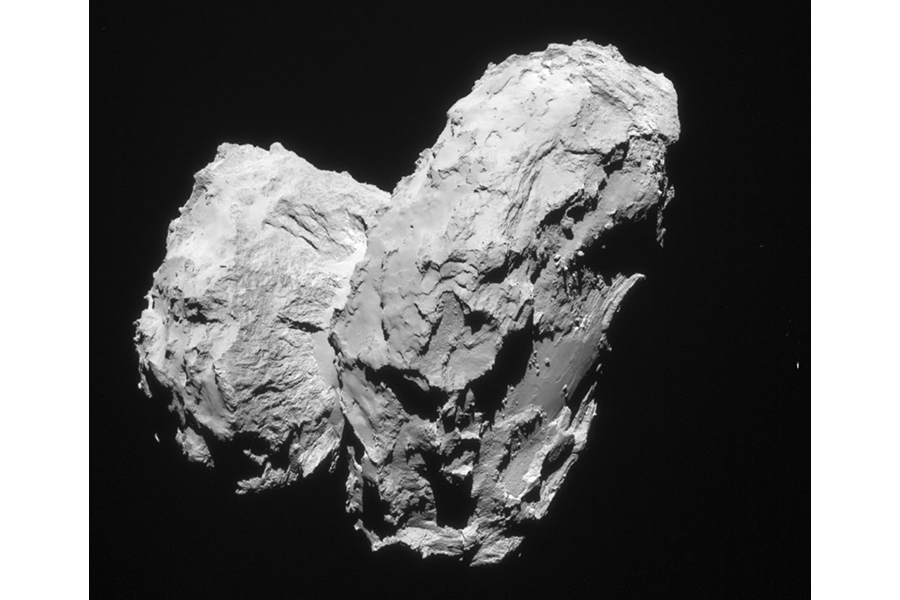Rosetta finds clues about mysterious origins of comet 67P
When scientists got their first close-up look of a comet last year it didn’t look like what they expected.
Instead of the single ball of rock and ice they had imagined, scientists instead saw two distinct "lobes" of rock and ice fused together. The comet looked vaguely like a rubber duck, some thought.
Now scientists think they know how the comet 67P Churyumov-Gerasimenko achieved this shape, claiming that their discovery could give significant insight into how comets and planets may have formed billions of years ago.
Using data collected by cameras onboard the Rosetta space probe – which has been orbiting the comet since August 2014 – scientists were able to determine that the comet is made up of two smaller bodies that may have once collided, then fused together over billions of years. The findings were published Monday in the journal Nature.
"For the first time, this study gives observational evidence on how the primordial bodies formed," Matteo Massironi, one of the study's authors and a researcher at the University of Padova in Italy, told the Associated Press.
High resolution imaging of the comet showed that layers on the larger lobe formed independently of layers on the smaller lobe.
Jay Melosh, a professor of planetary science at Purdue University who wasn’t involved in the study, told AP the discovery indicates that "the two lobes grew separately and only joined together later in their history, gently 'docking' together during an ancient encounter that apparently did little damage to either partner."
"This growth is believed to have occurred about 4.5 billion years ago, contemporaneous with the formation of the solar system," added Dr. Melosh, who has been involved in a number of NASA missions exploring comets Tempel 1 and Hartley 2.
Dr. Massironi said the fusion likely occurred in the early years of the solar system, while dust was still coagulating into larger bodies on the outskirts of the system and planets were still forming in the interior of the system.
Comets are valuable assets for scientists studying the early solar system, since they are essentially frozen remains of the same rocks and dust that formed the system’s eight (or nine) planets.
As The Christian Science Monitor’s Pete Spotts wrote in January, comets "are thought to carry some of the most pristine ingredients the young sun and its extended disk of dust and gas had to offer as raw material for planets."
"Comets are also known to carry organic compounds," he added, "and are thought to be one type of vehicle that delivered water and organic chemicals to Earth – chemicals that could serve as building blocks for more complex molecules underpinning organic life."
This report contains material from the Associated Press.







